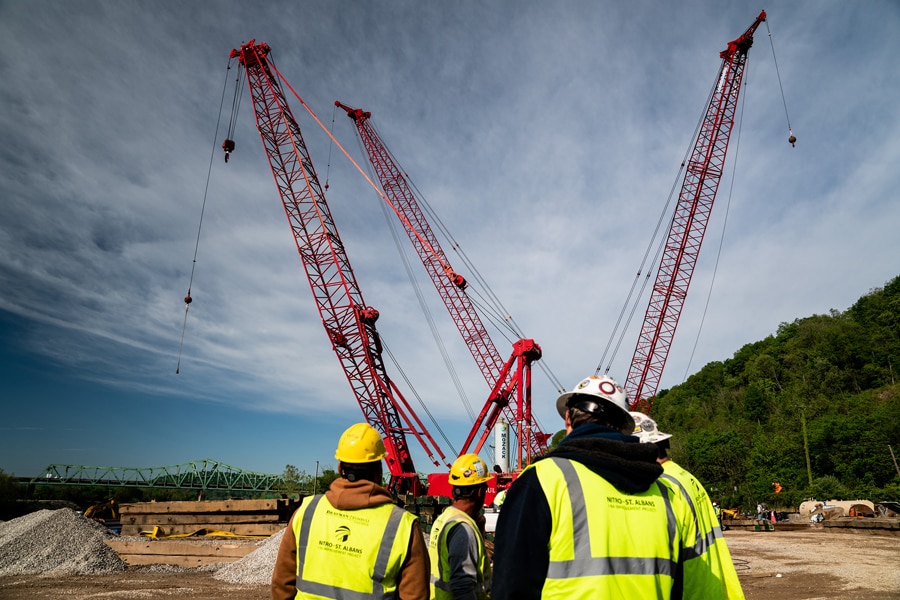
What will Joe Biden's $1 trillion infrastructure deal achieve?
The sprawling, $1 trillion bill, a 2,702-page bipartisan deal that is the product of months of negotiating and years of pent-up ambitions to repair the nation's crumbling infrastructure—would amount to the most substantial government expenditure on the aging public works system since 2009
 Construction on a bridge in Charleston, W.Va., May 6, 2021. The sprawling, $1 trillion bill that the Senate took up on Monday, Aug. 2, 2021 — a 2,702-page bipartisan deal that is the product of months of negotiating and years of pent-up ambitions to repair the nation’s crumbling infrastructure — would amount to the most substantial government expenditure on the aging public works system since 2009. (Erin Schaff/The New York Times)
Construction on a bridge in Charleston, W.Va., May 6, 2021. The sprawling, $1 trillion bill that the Senate took up on Monday, Aug. 2, 2021 — a 2,702-page bipartisan deal that is the product of months of negotiating and years of pent-up ambitions to repair the nation’s crumbling infrastructure — would amount to the most substantial government expenditure on the aging public works system since 2009. (Erin Schaff/The New York Times)
Amtrak would see its biggest infusion of money since its inception a half-century ago. Climate resilience programs would receive their largest burst of government spending ever. The nation’s power grid would be upgraded to the tune of $73 billion.
The sprawling, $1 trillion bill that the Senate took up Monday — a 2,702-page bipartisan deal that is the product of months of negotiating and years of pent-up ambitions to repair the nation’s crumbling infrastructure — would amount to the most substantial government expenditure on the aging public works system since 2009.
It is also stuffed with pet projects and priorities that touch on nearly every facet of American life, including the most obscure, like a provision to allow blood transport vehicles to use highway car pool lanes to bypass traffic when fresh vials are on board and another to fully fund a federal grant program to promote “pollinator-friendly practices” near roads and highways. (Price tag for the latter: $2 million per year.)
The measure represents a crucial piece of President Joe Biden’s economic agenda, and the agreement that gave rise to it was a major breakthrough in his quest for a bipartisan compromise. But it was also notable for the concessions Biden was forced to make to strike the deal, including less funding for clean energy projects, lead pipe replacement, transit and measures targeted to historically underserved communities.
Some of those provisions could be included in Democrats’ budget blueprint, expected to amount to $3.5 trillion, which they plan to take up after completing the infrastructure bill and push through unilaterally over Republican objections.
©2019 New York Times News Service







